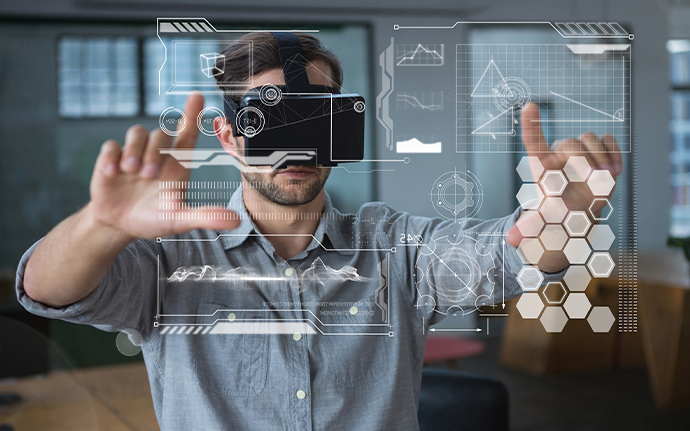
Augmented Reality (AR) and Virtual Reality (VR) are no longer confined to the realms of science fiction. These immersive technologies have found their way into our daily lives, and their integration into mobile app development is revolutionizing the way we interact with digital content. In this article, we will delve into the world of AR and VR integration, exploring their potential, applications, and the impact they are making on the mobile app development landscape.
The Rise of AR and VR
Augmented Reality (AR) overlays digital information onto the real world, enhancing our perception and interaction with our surroundings. Virtual Reality (VR), on the other hand, transports users to entirely digital environments, immersing them in a simulated reality. Both AR and VR have gained significant traction in recent years, and their adoption is set to grow even further.
Applications Across Industries
1. Gaming and Entertainment
AR and VR have transformed the gaming and entertainment industries. Games like Pokémon GO introduced the world to the potential of AR by allowing players to catch virtual creatures in the real world. VR headsets offer immersive gaming experiences, making players feel like they’re inside the game.
2. Education and Training
AR and VR are revolutionizing education and training. Virtual classrooms, interactive simulations, and immersive training scenarios provide learners with engaging and effective learning experiences. Medical students, for example, can practice surgeries in a risk-free VR environment.
3. Healthcare
In healthcare, AR and VR are used for patient diagnosis, treatment planning, and therapy. Surgeons can overlay patient data onto their field of view during surgeries, and VR therapy is helping patients cope with pain and anxiety.
4. Real Estate and Architecture
AR enables real estate agencies to offer virtual property tours, allowing buyers to explore properties from anywhere. Architects and designers use VR to walk clients through virtual building designs before construction begins.
5. Retail and E-commerce
AR is enhancing the retail experience. Customers can try on virtual clothing, visualize furniture in their homes, and even see how makeup products will look on their skin. This technology bridges the gap between online and offline shopping.
AR and VR in Mobile App Development
1. Enhanced User Engagement
Mobile apps that incorporate AR and VR technologies provide users with unique and engaging experiences. From AR filters on social media platforms to VR-based travel apps that let users explore destinations before booking, these technologies keep users coming back for more.
2. Improved Product Visualization
E-commerce apps benefit greatly from AR integration. Customers can see how furniture fits into their living rooms or how a new pair of shoes looks on their feet. This boosts confidence in purchasing decisions and reduces return rates.
3. Location-Based AR Services
Location-based AR apps use GPS and smartphone cameras to provide users with information about their surroundings. For example, an AR app can identify nearby restaurants and display user reviews when users point their phone’s camera at a street.
4. Training and Simulations
Mobile apps with VR capabilities are used for training simulations in various industries. Flight simulators, medical training apps, and even automotive repair simulations help learners acquire practical skills in a controlled virtual environment.
5. Augmented Marketing
AR and VR open up innovative marketing possibilities. Brands can create interactive advertising campaigns that allow users to engage with products in a fun and immersive way. These campaigns are highly shareable, increasing brand exposure.
Challenges and Considerations
While AR and VR hold immense potential, they come with challenges. Developing AR and VR apps requires specialized skills and tools. Hardware limitations of mobile devices, such as processing power and battery life, can affect the user experience. Privacy and data security also need careful consideration, as AR and VR apps may collect sensitive user information.
Conclusion
The integration of AR and VR in mobile app development is reshaping industries and enhancing user experiences. As technology continues to advance, the possibilities for AR and VR are limitless. From immersive gaming and training simulations to revolutionizing the way we shop and learn, these technologies are set to become even more ingrained in our daily lives.
Mobile app developers and businesses must stay ahead of the curve by embracing AR and VR. As hardware and software continue to evolve, the barriers to entry will lower, making these technologies more accessible to a wider range of industries. The future of mobile app development is undoubtedly intertwined with the exciting world of AR and VR.

